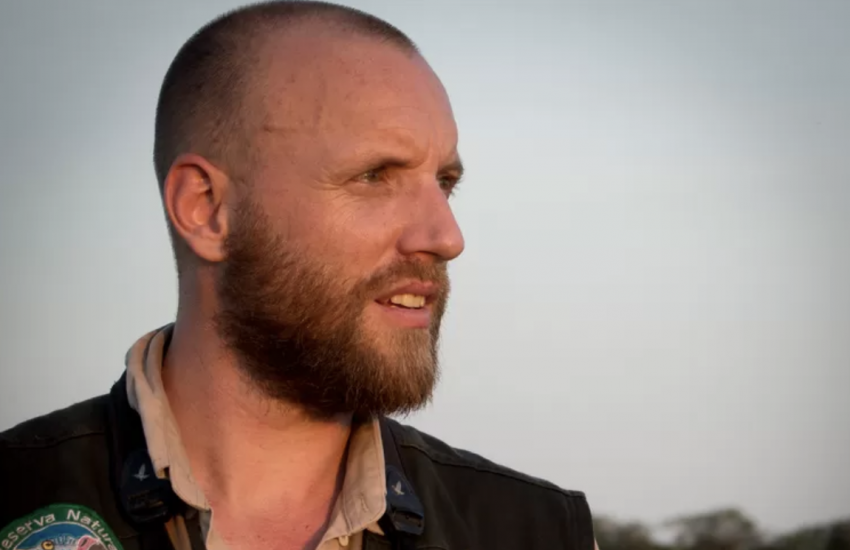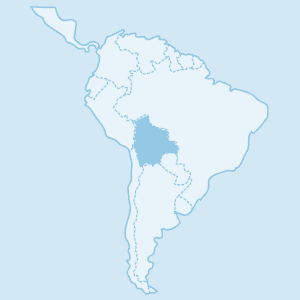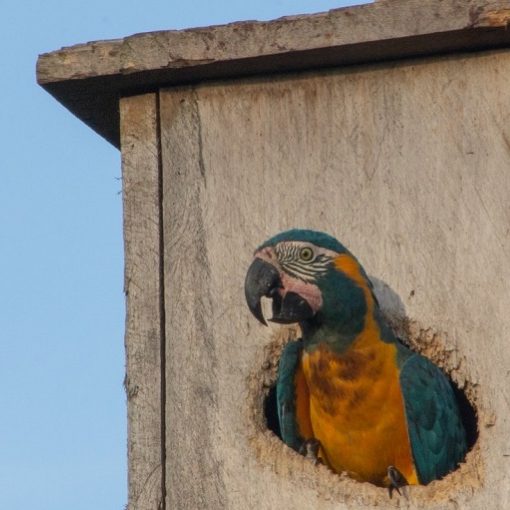Land Acquisition Fund ambassador Arjan Dwarshuis supports nature
16 December, 2024


Land Acquisition Fund ambassador Arjan Dwarshuis supports nature
16 December, 2024
Creating sustainable futures: Enhancing agarwood production in West…
11 December, 2024
Tuesday 07 december 2021
In the 1980s, conservationists thought the blue-throated macaw had gone extinct in the wild, until some macaws were rediscovered in the 1990s. In the northern part of the tropical Beni savanna in Bolivia, birders spotted a group of seventeen specimens. Today, only 450 blue-throated macaws divided into three subpopulations live scattered across the Beni savannah.

In 2014, Tjalle’s organization Armonía purchased 1,900 hectares in the northern part of the Beni savannah, where palm tree species grow that provide the macaws with food and nesting cavities. With the purchase, the existing Barba Azul Reserve increased to 11,000 hectares, creating a safe haven twice the size of Dutch National Park the Hoge Veluwe, right in the location where the blue-throated macaw had been rediscovered. This purchase was made possible by the IUCN NL Land Acquisition Fund and the Dutch National Postcode Lotery, amongst others.
The odds of saving these species further improved with the allocation of another grant by the IUCN NL Land Acquisition Fund in 2017, which enabled Armonia to secure an important 681 hectare breeding area for the southern population of these macaws: the Laney Rickman Reserve. To create even more nesting opportunities, Armonia installed specially designed artificial nesting boxes in the reserve, with support from ARTIS Amsterdam Royal Zoo.
Tjalle participated in the first-ever global count of the blue-throated macaw. He has led several expeditions to discover the species’ breeding grounds. For one instance, he and an assistant set out for a month to find out where the macaws stay when the dry season is over. On horseback they traveled across the Beni savannah, locally called the Llanos de Moxos, an area three times the size of the Netherlands.
With success: they discovered 15 nests of the blue-throated macaw in dead palm trees in five different places. They learned that the macaws like to nest in a certain type of palm trees that had become rare due to cattle ranching. In order to make the land more fertile, farmers burn their grasslands every year, scorching the young palms in their fire. In addition, young palm trees have little chance of survival when cattle graze too much.


Thanks to the use of drones, Tjalle and his assistant were able to study the nests properly and share their findings. These discoveries formed the groundwork for a hugely successful protection and nest box program.
One important measure was to reduce the opening in the nest box so that the nest boxes would not be used by other, less vulnerable bird species. In addition, Armonía constructed “fire barriers” to prevent fires from affecting the blue-throated macaw’s habitat.
Due to his efforts to conserve the species, in 2020 Tjalle was awarded the prestigious Future For Nature Award. As Conservation Program Director at Asociación Armonía, he continues his hard work to prevent the blue-throated macaw from going extinct and to protect species across Bolivia.
16 December, 2024
Did you know that world record holder in bird watching Arjan Dwarshuis is ambassador for the Land Acquisition Fund? The…
11 December, 2024
In Padang Laweh, West Sumatra, the Social Forestry Business Group (KUPS) Putra Harapan is striving to create sustainable livelihoods while…